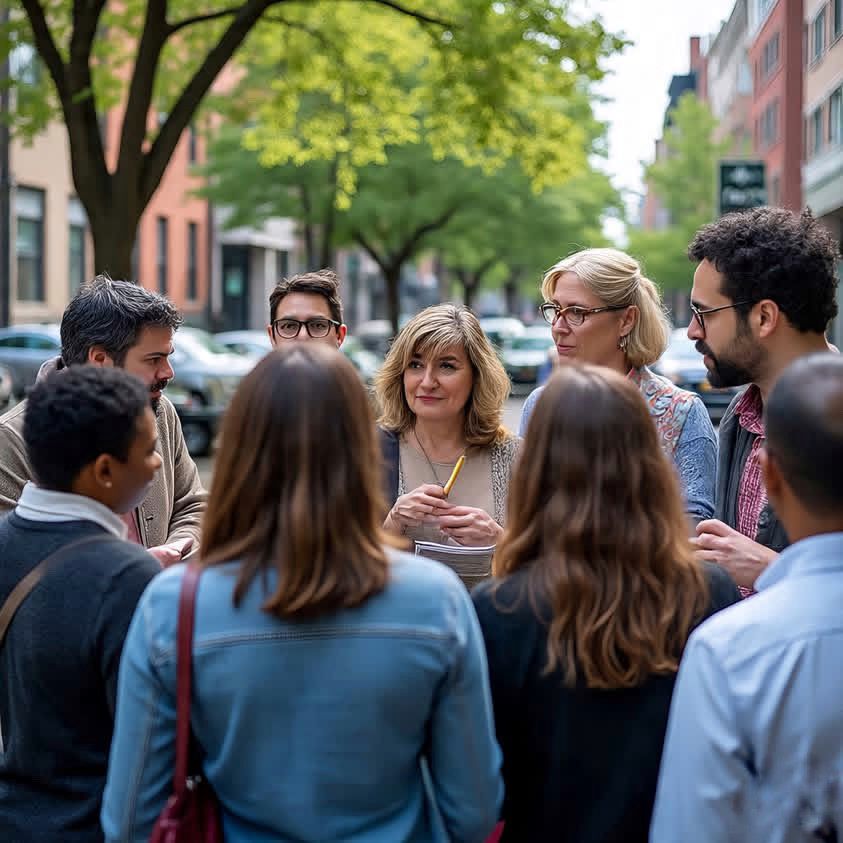Explore the sociology of gentrification and its impact on community bonds, cultural identity, and social networks in urban areas. Walking through my old neighborhood last month, I barely recognized the streets where I grew up. The corner bodega where my grandmother bought her weekly groceries had transformed into an artisanal coffee shop charging six dollars for a latte. The apartment building where three generations of the Martinez family lived now displayed a sign advertising luxury condos starting at three thousand dollars a month. This personal encounter with urban transformation made me realize how deeply gentrification affects not just buildings and businesses, but the entire social fabric of communities.
The sociology of gentrification reveals complex patterns that go far beyond simple economic transactions. When middle class residents move into historically working class neighborhoods, they bring with them different cultural practices, economic resources, and social expectations. This demographic shift creates what sociologists call a “cultural displacement” that operates alongside the more visible physical changes we observe in storefronts and housing developments.
I remember talking to Mrs. Chen, who had lived in the same Chinatown apartment for forty years. She described how the new residents complained about the noise from traditional lion dances during cultural celebrations, something that had never been an issue before. Her story illustrates how gentrification creates tension between existing community traditions and incoming cultural norms. The newcomers were not necessarily hostile to Chinese culture, but their different lifestyle expectations began reshaping the neighborhood’s social dynamics in subtle yet profound ways.
The economic mechanisms driving neighborhood transformation operate through what researchers term “rent gap theory.” When property values in an area remain significantly below their potential market value, investors and developers see opportunities for profit. This economic incentive drives the initial wave of changes that make neighborhoods attractive to higher-income residents. However, the human cost of this process often remains invisible in purely economic analyses.

Social networks within communities experience dramatic disruption during gentrification processes. Long-established informal support systems, where neighbors look after each other’s children or elderly relatives, begin fragmenting as original residents relocate due to rising costs. The new residents, while often well intentioned, typically lack these deep community connections that took decades to develop. This creates what sociologists describe as “social capital erosion,” where the intangible but crucial bonds that hold communities together gradually weaken.
The role of local institutions becomes particularly interesting when examining gentrification through a sociological lens. Churches, community centers, and small businesses that served as gathering places for original residents may struggle to adapt to changing demographics. Some embrace the changes, modifying their services to appeal to newer residents, while others resist, trying to maintain their traditional roles. This institutional adaptation process creates winners and losers within the same neighborhood, adding another layer of complexity to community transformation.
Race and class intersections make gentrification patterns even more complicated than simple economic explanations suggest. When predominantly white, college educated residents move into historically Black or Latino neighborhoods, the changes involve more than income differences. Different cultural practices around public space usage, noise levels, and community interaction styles can create misunderstandings that fuel underlying tensions. These cultural clashes often get misinterpreted as purely economic conflicts when they actually reflect deeper social and racial dynamics.
The timing of gentrification waves also matters significantly from a sociological perspective. Neighborhoods experiencing rapid change over two or three years face different challenges than those undergoing gradual transformation over a decade or more. Rapid gentrification tends to create more dramatic social disruption, while slower processes may allow for more organic adaptation and integration between old and new residents.

Policy responses to gentrification often focus on housing affordability and zoning regulations, but sociological research suggests that successful interventions must also address social integration challenges. Programs that facilitate meaningful interaction between long-term and new residents, support for existing community institutions, and preservation of cultural spaces all play crucial roles in maintaining neighborhood social cohesion during periods of change.
Looking forward, understanding gentrification as a complex social process rather than simply an economic phenomenon opens up new possibilities for more thoughtful urban development. When city planners and community leaders recognize the importance of social networks, cultural practices, and institutional relationships, they can design interventions that preserve the positive aspects of neighborhood change while minimizing harmful displacement effects.
My old neighborhood will never return to what it was, and perhaps that is not entirely negative. Some changes have brought improved safety, better infrastructure, and new economic opportunities. However, acknowledging the real social costs of these transformations and working actively to preserve community connections and cultural identity remains essential for creating truly inclusive urban spaces that benefit both new and existing residents.
Reference
Freeman, L. (2006). There goes the ’hood: Views of gentrification from the ground up. Temple University Press.
Brown-Saracino, J. (2009). A neighborhood that never changes: Gentrification, social preservation, and the search for authenticity. University of Chicago Press.
Newman, K., & Wyly, E. K. (2006). The right to stay put, revisited: Gentrification and resistance to displacement in New York City. Urban Studies, 43(1), 23–57. https://doi.org/10.1080/00420980500388710

